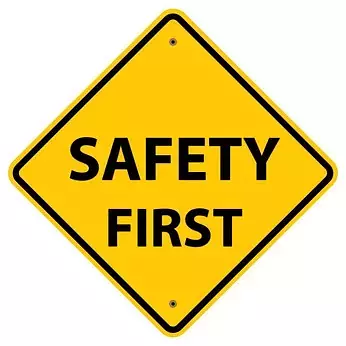 Forklift operators and material handling professionals perform pre-shift safety inspections on their equipment for various reasons. Some of these professionals perform these inspections as a formality, because company policy dictates it. Such people are usually unable to avoid the temptation to just fill in the checklist, without even looking at the equipment.
Forklift operators and material handling professionals perform pre-shift safety inspections on their equipment for various reasons. Some of these professionals perform these inspections as a formality, because company policy dictates it. Such people are usually unable to avoid the temptation to just fill in the checklist, without even looking at the equipment.
Why Pre-shift Equipment Inspections are Necessary
When planning a trip, most people will take time to check their car or truck for safety issues, including wear on tires, fluid levels and so forth. They do this out of concern for their safety. These pre-trip inspections prevent their trips from being cut short due to unnecessary breakdowns. A breakdown can lead to huge repair costs, especially irritating while one is away from home.
The same precautionary inspections apply to forklift operators and material handlers on their jobs. Even though these professionals may not be the owners of the equipment, they have the responsibility of operating the equipment every day. Therefore, it is up to the individual operators to ensure that the equipment operates optimally and is safe to use within the facility.
Checklist of Pre-shift Safety Inspections
1. Safety Inspections before Turning on the Engine
Before turning on the engine, conduct visual checks on the equipment. Identify any cracks, damage, or leaks on the equipment. In addition, determine the general condition of:
Fluid levels: Check the levels of fuel, engine oil, transmission fluid, brake fluid, radiator coolant, and hydraulic oil. At the same time, check for leaks.
Tires: Check the condition of tires and the tire pressure. Look for excessive wear, bulges, and cuts.
Battery: Check the level of electrolyte, battery water and charge.
Forks: Check the condition of the forks, in particular, the heel and top clip retaining pin.
Safety Warnings: Check if the safety warnings are properly attached, legible and clearly visible.
Overhead Guard: Check if the overhead guard is properly attached, or if it is damaged in any way.
Hood Latch: Check if the hood latch is properly adjusted and fastened securely.
Seat Belt: Check for any signs of damage to the seat belt, buckle, or retractor.
Hoist System: Check for damage to the hoisting/lifting mechanism including the hydraulic hoses, cables, mast chains, and stops.
Engine Belts: Check for signs of damage to the engine belts, including rips and cracks.
Engine Air Cleaner: Check the condition of the air cleaner, and replace if it is dirty.
Safety Appliances: Check if all the appropriate safety appliances are available. These include fire extinguisher, lights, horn, backup alarm, wipers and mirrors.
2. Safety Inspections with the Engine Running
When the engine is on, perform a systems check on the major component to ensure that the following are functioning properly:
- Accelerator/Direction Control Pedal
- Steering Operation
- Gauges: Fuel Level, Engine Oil Pressure, Temperature, Ammeter, Hour Meter, Instrument
- Brakes: Service and Parking Brake
- Horn and Lights
- Monitors
- Forward/Reverse Drive Control
- Attachment Control Operation
- Forward- and Back-tilt Control
- Lowering and Hoist Control
- Cab – Defroster, Heater, Wipers
Pre-shift equipment inspections should never be seen as a waste of time. Forklift operators should perform the required inspections not only because they are required, but also because they care about their own safety and the safety of their colleagues. Companies obviously want to avoid accidents and incidents within their workplace when you need to call an attorney, and thus would not allow their workers to operate faulty or unsafe equipment. Responsibility to ensure safety lies with the individual equipment operators.
